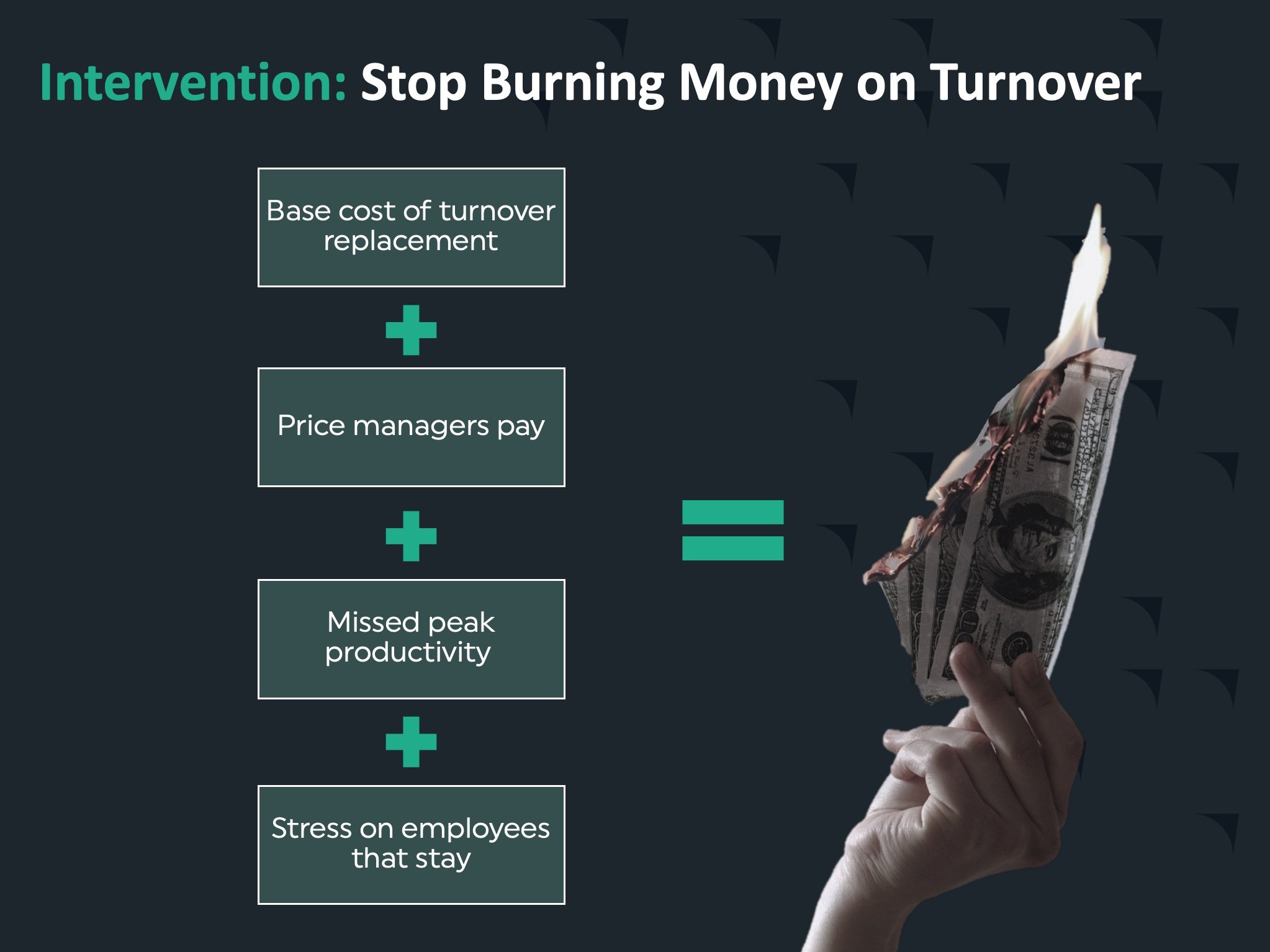Executive-Ready Answers to "Why is Employee Development Important?"
The heart of an organization is its people. Talent is not just a resource—it’s the core of innovation, growth, and competitive advantage. Yet, among the daily churn and hustle of hitting KPIs and targets and benchmarks, the human element of work can quickly become overshadowed.
That’s a recipe for employees who feel disengaged. It’s especially risky in a world where half of employees are actively looking for new jobs. As leaders, can you say if your employees actually feel like they’re being treated as humans? Or do they feel they are just a cog in a machine?
The first step to finding a solution to a problem is recognizing it. The key to maintaining a competitive edge lies in your talent, and organizations that invest in meaningful employee development reap the rewards. In turn, these employees drive innovation of your organization at large.
If development stalls, your business risks more than stagnation. You’re looking at a cost of turnover that includes recruiting, hiring, and training. All of this puts even more stress on your remaining team members.
Register for a free webinar: How Group Coaching Creates a Better Employee Experience
Reset and Reframe: Demonstrate Value, Enhance Performance
Let’s zoom out. Companies act like employee development can be solved once at an annual performance review—just check some boxes and make sure everything is good to go.
Not only is this a quick way to increase employee disengagement and turnover, it’s actually a particularly costly form of mismanagement. According to Gallup, disengaged employees cost the world $8.8 trillion—that’s 9% of the global GDP.
Via Disrupt HR: It’s Time to Fight Employee Turnover
Once an employee is at the point where they are actively considering leaving, even counteroffers or last-minute incentives rarely keep them for long. To prevent reaching this stage, companies need to identify the most at-risk employees early and show that they are not just listening but actively responding to their needs.
Investing in an environment where employees learn to take care of themselves fosters loyalty. It cultivates an organizational culture where growth and satisfaction are nurtured from within.
“By offering continuous learning and development programs that are part of employees’ work-based learning, employers will empower employees while creating an environment that encourages continued growth.”
The Pursuit of Effective Workplace Training
Preventing Turnover: The Human Element
Talent development is broken. We live in a world where companies don’t treat their employees as adults. They treat them like children, not recognizing their long-term goals and what’s driving them to come to work every day.
HR leaders already recognize that they’re in a constant battle against employee turnover and that employee development is a key part of the solution. Investing in people is an investment in the very engine of the organization. Traditional approaches to HR treat employees as little more than robots who need to be made just a little more efficient.
This outdated way of thinking will burn out employees and ensure they don’t feel valued. Both are quick ways to increase turnover.
“Train people well enough so they can leave, treat them well enough so they don’t want to.”
By taking a holistic approach to employee development—one that helps a person become a better person for their sake, rather than the company’s sake—you demonstrate that you understand their value and humanity. They feel more personally satisfied, with a higher level of well-being.
When the employee feels like the best version of themselves, it’s better for your company. For more than 82% of employees, the key driver of their productivity is feeling happy and engaged at work.
True employee development is about maximizing potential. When you focus on fulfilling potential, the performance will come.
The traditional HR approach lacks a human touch. Humans are much more than cogs in a machine. Why treat them that way? They need acknowledgement and purpose. They need to know that their development is not just about enhancing what they do, but who they are and what they can become.
“What’s in it for me?” resonates deeply with employees. It’s not just about the company’s needs but also about honoring the individual’s aspirations. Addressing this question isn’t a one-off task. It’s an ongoing commitment to see and appreciate the employee, to invest in them genuinely, and to show them that the training and development opportunities presented are tailored to their growth.
“Everyone wants to feel special and unique, and how we get certain needs met in our careers is often quite personal. But at their core, needs and areas of development are often shared across professionals.”
Ben Brooks, Founder & CEO, PILOT
Cost, Talent, and Loyalty: The Value of Employee Development
Why is employee development important? It’s an incredibly expensive and inefficient to have a revolving door in your organization. When your organization loses a staff member, it’s not just losing an employee—it’s losing institutional knowledge, productivity, and part of your overall culture. The direct and indirect costs of employee turnover drive the importance of retention through development.
High turnover hits at all levels. It’s bad for the company. It’s bad for managers. It’s bad for talent leadership. It’s like a flat tire on a journey—it slows progress and requires immediate attention, often at the expense of other priorities. And there’s just no way of advancing without fixing it.
Successful employee development can extend an employee’s work lifespan. Even an extension as short as six months can have a massive financial impact.
Recognize People, Foster Success: Why Employee Development Is Important
Employee development is important. If neglected, it leads to turnover and the risk and expense that comes from hiring and training new employees. If your organization only hires externally and does not support or keep your employees engaged, the future of your workforce is not stable.
Your workforce wants to be recognized. They want to be heard. They want to be honored and respected. But the reality is that companies often make the mistake of not doing enough to serve their employees.
Want to learn more about how PILOT offers strategies for effective employee development that goes beyond traditional approaches?



